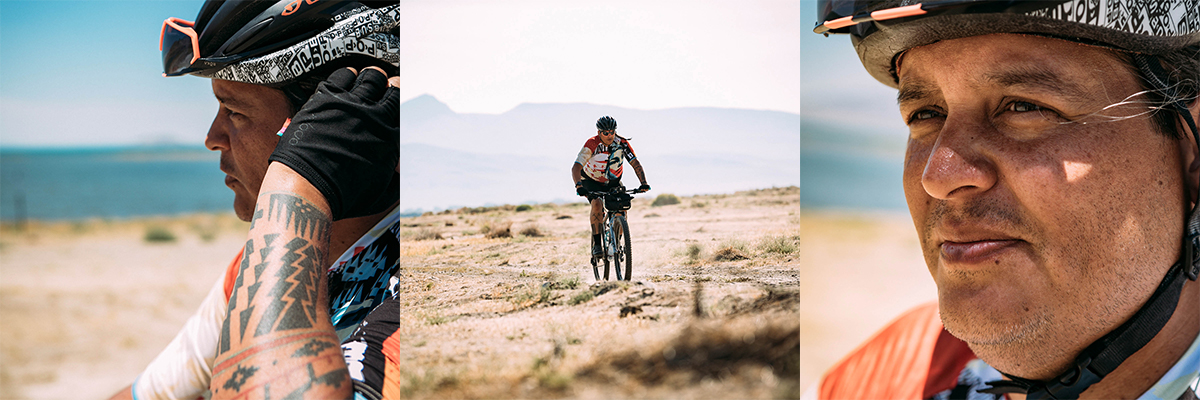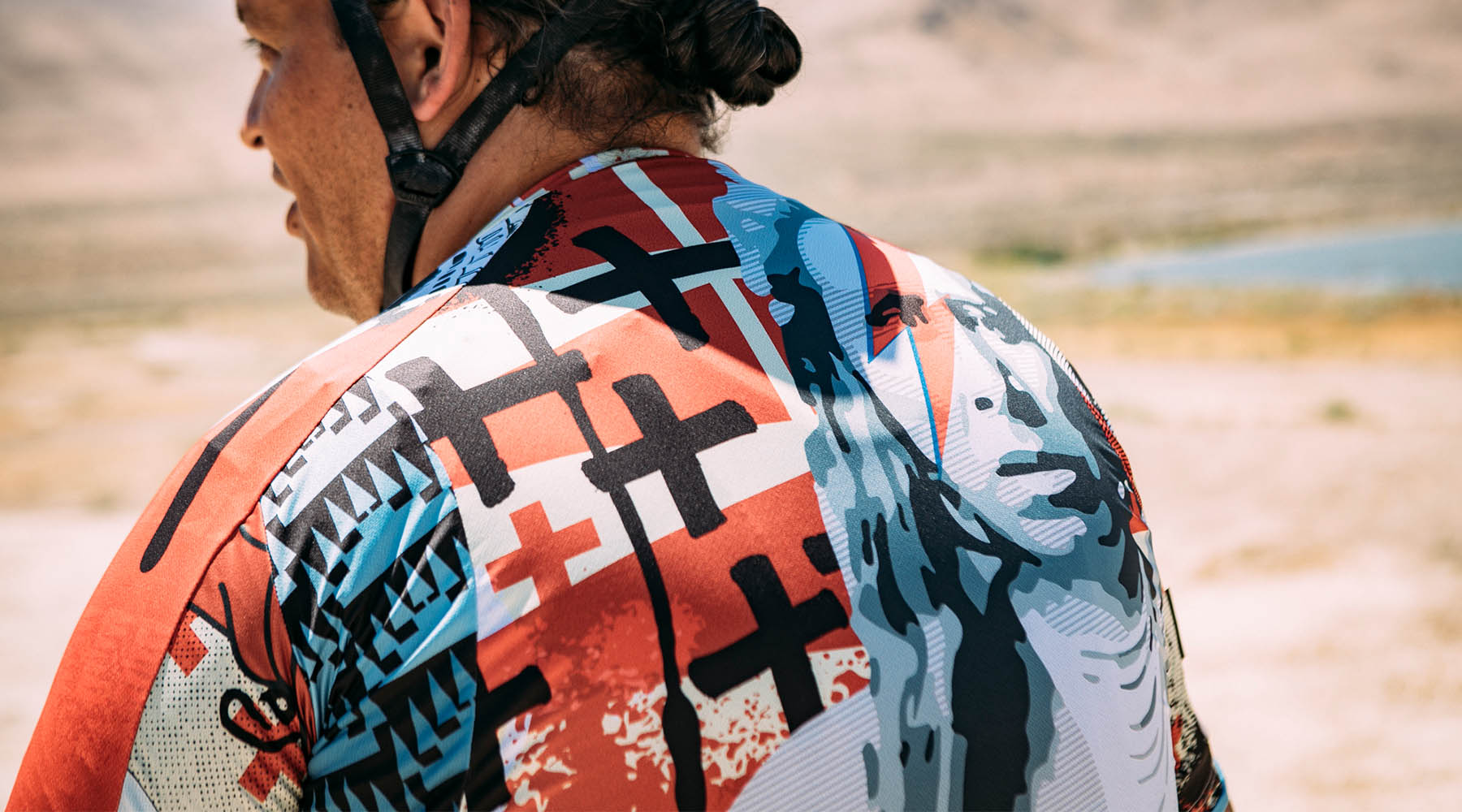Homelands: A Braided Lifeway
A long braid pokes out from under a black and white bike helmet, black-brown hair twisted into an ancestral tradition as old as time itself. Like the three strands of hair that create a braid, Gregg Deal’s life is woven together as an intersectional person of art, community, and movement. As an Indigenous person from the Pyramid Lake Paiute people, Gregg is simultaneously a person of the present, future, and past.
Many Indigenous peoples will agree that time is not linear. Striving to respect and honor ancestors, pushing forward personal happiness and community strength, and setting the way as future ancestors. This is why our presence on our ancestral homelands is not something taken lightly, as we carry our ancestors with us. There is an inherent knowing in your blood, as if the land is screaming out, “Welcome home.” My body often knows before my mind when I’m on my homelands. When Gregg bikes on his homelands this truth is ever-present. Through a blend of art and bikes, Gregg is carving the way for himself and his connection to home, honoring his ancestors in an ancient nomadic movement, and setting a standard of health and celebration of happiness for his community and those to come.
To be Indigenous and to be on a bike, due to access, culture, etc. is not entirely “normal” in our communities. Outdoors sports, in general, are often seen as exclusively privileged and thus predominantly white activities. As an Indigenous person on a bike, Gregg is working toward, as he puts it, “Indigenous in a different context.” To be seen in these spaces in the outdoors is to put us outside the context of our own cultures and traditional practices. He fights the barriers, the stereotypes, pushing back against anyone who has an idea of how a cyclist needs to look and act as well as how an Indigenous person needs to look and act.

The access for us as a whole isn’t there, and Gregg talks about how his access to bikes exists, “My parents made just enough money to be broke around a bunch of rich white kids.”
He grew up connecting with his Dad on bikes and that experience is unique in our communities. Through whatever means necessary, however, many Indigenous peoples have found their way to bikes, which is why seeing Gregg’s story and connection to cycling is so important for us. Despite the hoops, hurdles, and boundaries, we are still here, biking, laughing and healing. Some of the most phenomenal bikers I know are Indigenous, often ripping on their ancestral lands. Gregg works to change perceptions not only as a cyclist but primarily as an artist.
Gregg is a multimedia artist, a disrupter, a father, husband, and cyclist. He is a community member and mixed kid from Utah, who operates in many worlds, exposing truths and seeking reparations for his people and all Indigenous peoples. With his work, he paints larger-than-life murals, canvases, and other forms of images made into story, made into awareness, made into inspiration. Born from a culture that believes in the traditions of storytelling, Gregg breathes life into paint and puts paint into a stain, an imprint that never quite leaves someone’s mind. As he says, “Artists are culture keepers and, in Indigenous communities, are medicine people,” medicine meaning that the artist brings forth healing.
In a colonized country operating in various systems of oppression, our communities are constantly healing, finding joy, and healing again. Gregg believes that there is “medicine in creating,” not only for his people, himself, and his relatives but for other Native peoples that feel seen in his work and inspired by his work.
Editor’s Note: Gregg Deal designed the Velocio jersey featured in these photos, and all funds from jersey sales will go to The Sovereign Bodies Institute (for Missing and Murdered Indigenous Women, Girls, and Two-spirit) and Illuminative (working on Indigenous representation in media).


